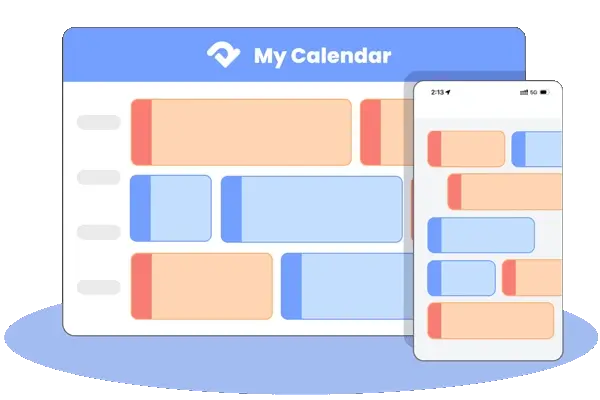A hotel’s website is more than just a digital brochure. If you are properly optimizing it, you can turn online visitors into paying customers. Nowadays, acquisition is pricey, OTAs relentless. Only a higher-converting site keeps you in the game.
No matter your hotel type – boutique, chain, or luxury resort – seeing how your website performs and making changes means more bookings and better profits.
What Is Hotel Website Conversion Rate?
Your hotel website conversion rate is the percentage of visitors who take a direct booking. It's a clear measure of how well your website turns interest into action.
If someone visits your website but leaves without booking, that’s a missed opportunity. But when a visitor clicks "Book Now" and confirms a reservation, that's a successful conversion. This number tells you how effective your website is at guiding potential guests through the decision-making process.
How to Calculate the Hotel Conversion Rate
The formula is simple:
Conversion Rate (%) = (Number of Direct Bookings / Number of Website Visitors) × 100%
Let’s say your site gets 5,000 visits in a month and you receive 100 direct bookings. That means your conversion rate is 2%.
What’s a “Good” Conversion Rate for Your Hotel?
In the hotel industry, most websites' conversion rate is between 1.5% and 2.5% of visitors into bookings. That means for every 100 people who land on your website, only 2 might finish a reservation.
This might seem low, but don’t be discouraged. With the right design, messaging, and user experience, you can push your hotel’s conversion rate above 3% or even higher.
Every percentage point you gain brings real revenue growth—and shows your website is doing its job well.
Why Do Visitors Leave Without Booking?
A high number of page visits doesn't guarantee success if users aren’t converting. Here are common reasons why potential guests leave without completing a booking:
- Slow-loading pages
- Confusing navigation or cluttered layouts
- Unclear pricing or availability
- Mobile-unfriendly design
- Lack of trust signals ( reviews or security badges)
- Too many steps in the booking process
Identifying and addressing these friction points is the first step toward improving your conversion rate.
How to Boost Your Hotel Website Conversion Rate: Practical Strategies
Improving conversions isn’t about big, expensive overhauls. It’s about small, intentional changes that make booking easier, build trust, and guide visitors toward that “book now” button. Here’s how to do it:
1. Put Information Front and Center
Travelers research before they book—so give them what they need, fast.
- Display prices clearly: Don’t make visitors create an account or click through multiple pages to see rates. Include taxes and fees upfront to avoid surprises later.
- Highlight amenities with benefits: Instead of just listing “free Wi-Fi” or “a gym,” explain what that means for guests. For example: “Free high-speed Wi-Fi so you can stream, work, or plan your day without interruption” or “24/7 gym with modern equipment—squeeze in a workout whenever it fits your schedule.”
- Use high-quality visuals: Photos and videos are your best tools to show off rooms, common areas, and local attractions. Include 360° tours if possible—they let visitors “walk through” your hotel before booking.
2. Simplify the Booking Process
The fewer steps between a visitor and a confirmed booking, the better.
- Cut down on steps: Aim for 3 steps or fewer: select dates, choose a room, and pay. Remove unnecessary fields from forms—ask only for what you need (name, email, payment details).
- Let guests book as visitors: Don’t force account creation. Offer a “guest checkout” option, then invite them to create an account later (in the confirmation email) for faster future bookings.
- Add a progress bar: Let visitors see how close they are to finishing (e.g., “Step 1 of 3: Select Your Dates”). This reduces frustration and keeps them moving forward.
3. Optimize for Mobile Users
If your site works great on desktop but fails on phones, you’re losing half your potential bookings.
- Speed it up: Mobile users won’t wait more than 3 seconds for a page to load. Compress images, fix broken links, and use tools like Google PageSpeed Insights to test and improve load times.
- Design for taps, not clicks: Make buttons (like “Book Now” or “Check Availability”) large enough to tap easily. Avoid tiny text or dropdown menus that are hard to use on a small screen.
- Simplify mobile checkout: Remove distractions like social media links or main navigation menus during the booking process. Keep the focus on completing the reservation.
4. Build Trust with Every Visitor
Trust is key to getting someone to book. Here’s how to earn it:
- Show security badges: Display logos for PCI DSS (payment security) or other trust signals. Let visitors know their credit card info is safe.
- Share real reviews: Feature guest testimonials prominently—especially photos or videos from real stays. Tools that let you display up-to-date ratings (e.g., “4.8/5 from 200+ guests this month”) add credibility.
- Be transparent about policies: Clearly state cancellation terms, check-in/out times, and any rules (e.g., “Pets allowed with a $50 fee”). No one likes hidden surprises.
- Offer a best rate guarantee: Promise that booking directly on your site means the lowest price. If visitors find a cheaper rate elsewhere, match it. This encourages them to book with you, not an OTA.
5. Add a Direct Booking Engine
If visitors can’t book directly on your site, your conversion rate will stay at zero. Invest in a user-friendly direct booking engine that integrates with your website.
- Promote direct perks: Encourage visitors to book direct by offering extras—like free breakfast, a late checkout, or a welcome drink. Highlight these perks on your homepage and booking page.
- Make it seamless: The booking engine should match your website’s design (colors, logos) so visitors don’t feel like they’ve left your site.
6. Fix Pages That Drive Visitors Away
Use analytics to find “high-bounce” pages—ones where visitors leave as soon as they arrive. These are often red flags.
- Check for relevance: If your homepage gets lots of bounces, maybe its content doesn’t match what brought visitors there. For example, if someone clicks a “family deals” ad but lands on a page about romantic getaways, they’ll leave.
- Improve content: Rewrite vague headlines (e.g., “Our Rooms” → “Spacious Family Rooms with Kid-Friendly Extras”). Add clear calls to action (CTAs) like “See Room Details” or “Book This Rate.”
7. Win Back Visitors Who Left Without Booking
Not every visitor will book on their first visit—but you can bring them back.
- Use remarketing ads: Target visitors who viewed rooms but didn’t book with ads on social media or search engines. Include a reminder (e.g., “You looked at our oceanview suite—still available!”) and a small discount to encourage them to return.
- Send reminder emails: If someone starts a booking but abandons it, send a friendly email within 24 hours. Include their selected dates and room type, plus a link to finish booking. Add a perk, like “Free parking if you book today,” to sweeten the deal.
8. Offer Real-Time Help
Visitors with questions are more likely to book if they get quick answers.
- Add a chatbot or live chat: Use a chatbot to answer common questions 24/7 (e.g., “Do you have airport shuttles?” or “What time is breakfast?”). For more complex questions, connect visitors to a human agent.
- Make contact easy: Display a phone number and email clearly. Let visitors know when your team is available to help (e.g., “Chat with us 9am–9pm local time”).
9. Personalize the Experience
Visitors are more likely to book if your site feels like it’s speaking to them.
- Tailor content to segments: If your hotel caters to families, couples, and business travelers, create pages for each group. For example, a “Family Stays” page could highlight kids’ clubs and connecting rooms, while a “Business Travel” page focuses on meeting spaces and fast Wi-Fi.
- Use past behavior: If a visitor checked out your luxury suite last week, show them a targeted offer for that room on their next visit (e.g., “Welcome back—save 10% on the suite you viewed!”).
10. Test, Learn, and Repeat
What works for one hotel might not work for yours. Test small changes to see what moves the needle.
- A/B test CTAs: Try different button text (“Book Now” vs. “Reserve Your Room”) or colors (red vs. blue) to see which gets more clicks.
- Experiment with pricing displays: Test showing prices as “$150/night” vs. “$1,050 for 7 nights” to see which feels more appealing.
- Track results: Use analytics to measure how changes affect your conversion rate. Double down on what works, and tweak what doesn’t.
Final Thoughts
You don't need to rebuild your whole website to get more direct bookings. Start small. Pick one thing to fix first—like making your booking process simpler or ensuring it works perfectly on phones. Get that right, then tackle the next. Even bumping your conversion rate up by just 1% could mean hundreds more direct bookings every year. That's real growth.

